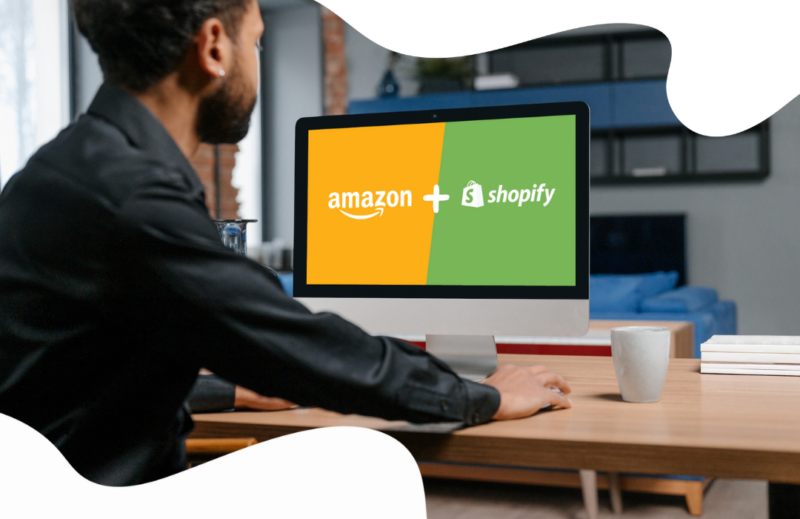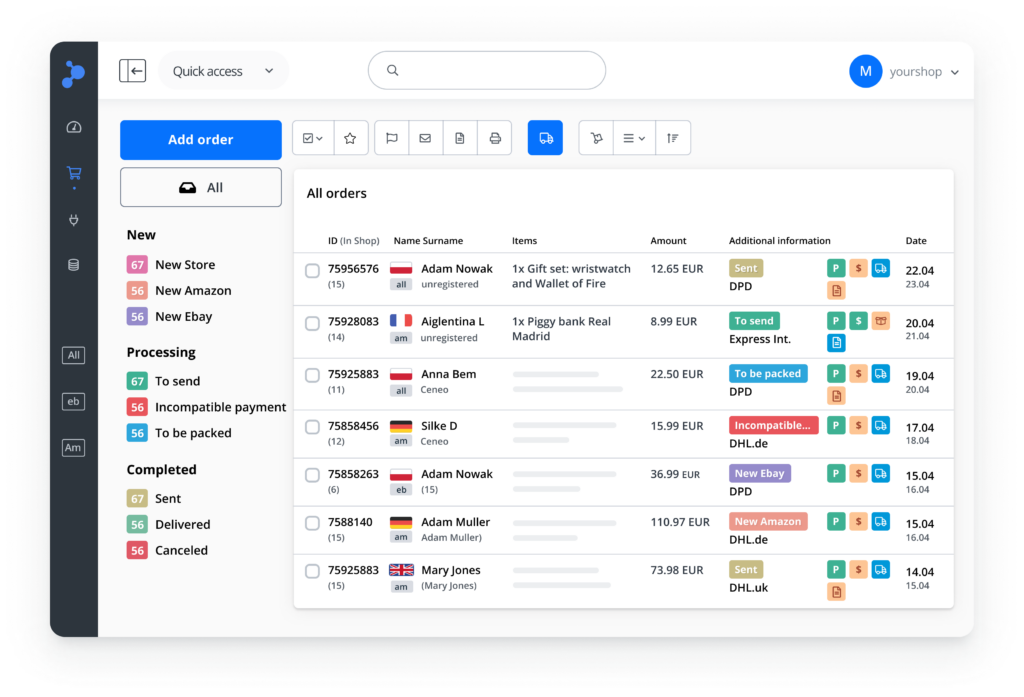
In the fast-paced world of eCommerce, sellers are constantly seeking new ways to thrive and grow. In this blog post, we’ll delve into why diversifying your sales channels is a game-changer and why managing both Amazon and your own store can be a challenging feat. But fear not, we’ll also provide you with some valuable solutions to streamline your operations and help you succeed.
Why sell not only on Amazon but also through your own store?
Here’s why:
Independence and Branding
Owning your own online store allows you to have complete control over your brand’s identity and customer experience. It’s your digital storefront where you can tell your brand’s story, build trust, and connect with your customers on a personal level.
Diversified Revenue Streams
Relying solely on one platform, even one as mighty as Amazon, can be risky. Policy changes or account issues can disrupt your business overnight. Expanding to your own store means multiple income streams and a safety net against unforeseen challenges.
Enhanced Profit Margins
Your own store typically comes with lower fees compared to marketplace platforms. This means higher profit margins and more flexibility in pricing strategies.
Access to Customer Data and Analytics
When you run your own store, you have direct access to invaluable customer data and analytics. This treasure trove of information allows you to understand your customers’ behaviors, preferences, and purchase patterns. Armed with these insights, you can tailor your marketing strategies, product offerings, and user experience to meet your customers’ needs effectively.

5 things to avoid when selling on Amazon and your own store on Shopify
While the benefits of selling on Amazon and your own store are undeniable, managing both simultaneously can be a Herculean task. Here are some common challenges you might face:
Inventory Management Nightmare
Keeping track of inventory across two platforms can be confusing and prone to errors. Over-selling and stockouts are nightmares for any seller.
Order Juggling Act
Managing orders from Amazon and your store separately can lead to order mix-ups, delays, and unhappy customers.
Double the Marketing Efforts
Running promotions, marketing campaigns, and SEO optimization for two different platforms can be time-consuming and exhausting.
Data Disarray
Gathering data from multiple sources for analytics and decision-making can be a logistical nightmare.
Customer Service Challenges
Providing consistent customer service across platforms can be tough, as each platform has its own set of rules and expectations.
How to sell on Amazon and your own website successfully?
Now, let’s explore some solutions to make managing both Amazon and your own store more manageable:
Centralized Inventory and Order Management
Consider using a multi-channel sales management tool like Baselinker. These tools allow you to sync inventory and orders across platforms, reducing the risk of overselling and order mix-ups. Baselinker also provides a workflow automation module that will help you eliminate manual work and possibly save on headcount.
Unified Marketing Strategy
To develop a unified marketing strategy that can be adapted to both Amazon and your own store, you can explore online marketing courses and resources on platforms like HubSpot Academy. These platforms offer a wealth of information and courses on digital marketing strategies that can be tailored to your specific needs.
Data Integration
For implementing data integration solutions, you can look into tools and services like Zapier. These platforms allow you to connect various apps and automate data flows, making it easier to centralize and manage your data efficiently.
Customer Service Automation
To streamline customer service tasks through automation, consider using tools like Zendesk and Freshdesk. These customer service platforms offer automation features that can help you handle common customer queries and requests more efficiently.
Professional Support
Seeking professional support or hiring experts in multi-channel eCommerce can be a wise investment. To find experienced professionals, you can explore freelance platforms, or consider reaching out to eCommerce consultancy firms.
These resources should help you get started in simplifying your operations and successfully managing both Amazon and your own store. Remember, it’s not just about selling on multiple platforms; it’s about selling smartly and efficiently. Empower yourself with the tools and knowledge you need to succeed in this ever-evolving digital landscape.
How Baselinker Can Help
Now that you’re convinced that Amazon and Shopify are worth investing in, let’s talk about how Baselinker simplifies managing sales through both of these channels:
Seamless Integration
Baselinker offers a seamless integration between Amazon and Shopify. This means you can manage your product listings, inventory, and orders from a single, centralized dashboard. No more jumping between different platforms to keep everything in sync.
Inventory Management
With Baselinker, you can efficiently track your inventory across Amazon and Shopify. Prevent overselling and streamline your order fulfillment process with real-time updates.
Order Management
Manage orders, process payments, and handle returns effortlessly. Baselinker’s order management system ensures you provide top-notch customer service on both platforms.
Reporting and Analytics
Make data-driven decisions with Baselinker’s robust reporting and analytics tools. Monitor the performance of your products, track sales trends, and optimize your pricing strategy.

How to Get Started with Baselinker
Ready to supercharge your Amazon and Shopify integration? Signing up for a trial with Baselinker is easy:
- Visit the Baselinker website.
- Click on the “Get Started” or “Sign Up for a Trial” button.
- Follow the simple on-screen instructions to create your account.
- Connect your Amazon and Shopify stores.
- Start managing your multi-channel sales more efficiently.

